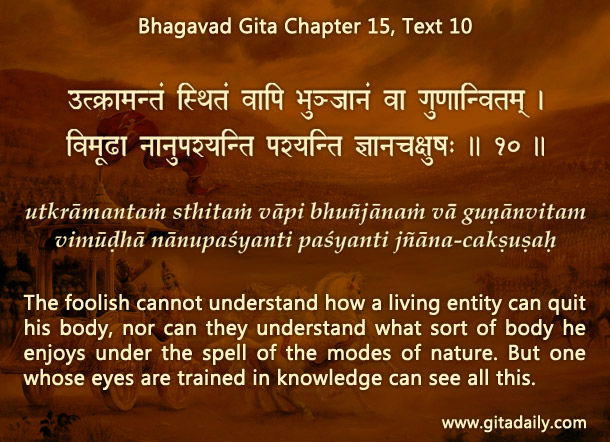Physical blindness makes us unaware of our surroundings, whereas metaphysical blindness makes us unaware of ourselves – our identity and our purpose. The Bhagavad-gita (15.10) indicates how the metaphysically blind can’t see their plight in material existence.
More troublingly, whereas physical blindness comes with the awareness that we are blind, metaphysical blindness frequently comes with blindness to our blindness – it couples with prevailing cultural conceptions to give us a pseudo-identity and a pseudo-purpose that makes us forget our ignorance.
Metaphysical blindness frequently comes with blindness to our blindness.
Most troublingly, whereas physical blindness comes with the humbling recognition that we often need help to find the way, metaphysical blindness comes with an arrogant assumption that we don’t need any help from anyone. Such arrogance insidiously makes aggressive anti-theists deride seeking help from God, the source of the supreme metaphysical vision, as a sign of pitiable emotional weakness.
These differences between the two blindnesses are not just theoretical but also consequential. Whereas physical blindness may trouble us for one lifetime, metaphysical blindness makes us do misdeeds whose reactions may haunt us for many lifetimes.
Thankfully, there’s a positive side to the differences too. Whereas physical blindness may not be curable, metaphysical blindness is eminently curable. The Gita (15.12-15) guides such people towards metaphysical vision by outlining how even the material things they need for their material survival and enjoyment are sustained by a non-material essence, the arrangement of God. Even if the metaphysically blind may never read the Gita, they can unknowingly follow its thought trajectory if they introspect open-mindedly and thereby infer the existence of God.
Gita wisdom stands ready to help them all the way in their healing journey right from showing them the first rays of metaphysical light to revealing to them the full beauty and glory of existence as an arena for love with the all-attractive Supreme Person, Krishna.

Explanation of article:
http://www.youtube.com/watch?v=qjS7HYHQUl0

Leave A Comment